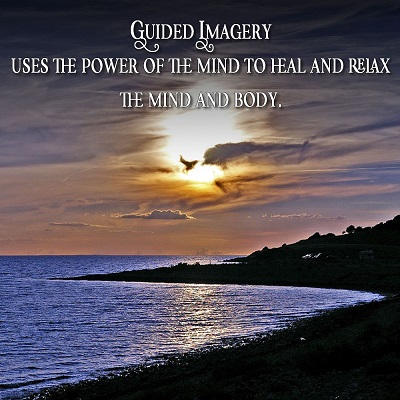 Images have the power to evoke emotions. Seeing a photo of a loved one can make you feel good as we recall happy memories attached to the photo. Alternatively, seeing photos depicting violence and destruction can make us feel quite the opposite.
Images have the power to evoke emotions. Seeing a photo of a loved one can make you feel good as we recall happy memories attached to the photo. Alternatively, seeing photos depicting violence and destruction can make us feel quite the opposite.
Images have long been attached to our emotions and memories, which is why we keep photos, and this is the principle behind Guided Image Therapy. This therapy uses images to help us achieve a relaxed state of mind to improve mental and physical health. Therefore, it works in helping to calm the mind, relieve anxiety, de-stress our mind and body, and provide total relaxation.
What to Expect
Guided imagery can be used on an individual or in a group setting. You can either use a therapist or do it on your own. It’s similar to training yourself to meditate.
If you use a therapist, at the beginning of the session you are instructed to lie down inside a quiet room, away from any distractions. You are made comfortable, and music is often used to help bring a sense of calm too.
You are then carefully guided to focus on something that makes you feel happy. If you do it on your own, you can think of your ‘happy place.’ You can lie there and let your mind take you far away, to somewhere that is pleasant for you.
Through verbal prompts, therapists guide their patients to imagine their happy place and to make use of their other senses, as it uses all five senses to help with healing. For example, you not only use your visual ‘imagination’ on a place or object, but also think of any different aromas, or sounds, and of course, how does it feel to the touch.
This guided imagery process can help slow down the patient’s breathing and calm their nerves if they feel anxious and stressed. Additionally, tensed muscles become relaxed, releasing tension felt throughout the entire body.
What Health Problems Can Guided Imagery Be Used For?
Several mental and physical health problems can be addressed by using guided imagery. Its main objective is to relax both the mind and body making it an ideal treatment for patients suffering from stress, fatigue, anxiety, depression, and PTSD (post-traumatic stress disorder). Even people suffering from grief can benefit from this relaxation technique.
In addition, guided therapy can also become an option for those who are seeking help with substance abuse or removing unwanted behaviors such as gambling. This is because it is a mindfulness technique that helps them practice being more mindful!
Aside from benefiting emotional and mental health, guided image therapy can also help patients who are suffering from chronic pain, autoimmune diseases, allergies and many other health conditions. Stress causes dis-stress, so easing stress in the mind, eases stress in the body.
Pros & Cons and No Side Effects
There are no known side effects of using guided imagery as a way to address any emotional or physical problems. It does not take long for it to take effect either as patients can de-stress in as little as ten minutes.
Guided imagery is not only used as a treatment for patients suffering from illness or chronic stress. It is often used as a technique to naturally relax. One of the advantages, as said earlier, is that you can do it independently without a therapist guiding you.
You can also use books to learn more, or watch videos, as there are many websites providing information on how to practice guided image therapy.
Alternatively, sessions with a therapist may be expensive, so this may be a disadvantage for some. However, if you haven’t had success at home, it may be worth a try so that you become familiar with the process.
Then you can try doing it independently again and save yourself some money.
Guided image therapy can be used together with other therapies, such as massage therapy or music therapy. It can also serve as an alternative therapy used with other traditional medical treatments.
In summary, guided imagery is a safe, effective method to help relax the mind and body. It certainly is a therapy that proves the power of the mind!






